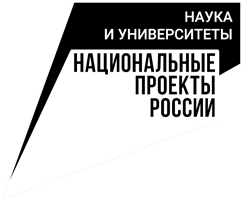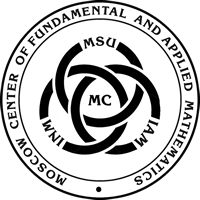Seminar Leader:
Sadovnichy V.A., academician, rector of Lomonosov Moscow State University
Co-leaders of the seminar:
- Wilfand R.M., Doctor of Technical Sciences, Scientific Director of the Hydrometeorological Center of Russia
- Dobrolyubov S.A., Corr. RAS, Dean of the Faculty of Geography, Lomonosov Moscow State University
- Lykosov V.N., Corr. RAS, chief scientist Institute of Computational Mathematics, Russian Academy of Sciences, Head. Laboratory of Supercomputer Modeling of Natural and Climatic Processes of RCC MSU
- Stepanenko V.M., Doctor of Physics and Mathematics, Deputy Director of RCC MSU
Scientific Secretary of the seminar:
Mortikov E.V., Ph.D., Researcher of RCC MSU
PROGRAM
| Yu. Troitskaya | Institute of Applied Physics, Nizhny Novgorod, Russia |
| A. Kandaurov | Institute of Applied Physics, Nizhny Novgorod, Russia |
| D. Sergeev | Institute of Applied Physics, Nizhny Novgorod, Russia |
| O. Ermakova | Institute of Applied Physics, Nizhny Novgorod, Russia |
| M. Vdovin | Institute of Applied Physics, Nizhny Novgorod, Russia |
| D. Kozlov | Institute of Applied Physics, Nizhny Novgorod, Russia |
| O. Druzhinin | Institute of Applied Physics, Nizhny Novgorod, Russia |
| S. Zilitinkevich | Finnish Meteorological Institute, Helsinki, Finland |
MICROPHYSICS OF THE AIR-SEA COUPLING AT HIGH WINDS AND ITS ROLE IN THE DYNAMICS AND THERMODYNAMICS OF SEVERE SEA STORM
Showing the record strengths and growth-rates, a number of recent hurricanes have highlighted needs for improving forecasts of tropical cyclone intensities most sensitive to models of the air-sea coupling. Especially challenging is the nature and effect of the very small-scale phenomena, the sea-spray and foam, supposed to strongly affecting the momentum- and heat- air-sea fluxes at strong winds. This talk will focus on our progress in understanding and describing these "micro-scale" processes, their physical properties, the spray and foam mediated air-sea fluxes and the impact on the development of marine storms.
The starting points for this study were two laboratory experiments. The first one was designed for investigation of the spray generation mechanisms at high winds. Basing on high-speed video we identified it as the "bag-breakup" mode of fragmentation of liquid in gaseous flows known in a different context. From first principles of statistical physics we developed statistical description of these phenomena and show that at extreme winds the bag-breakup is the dominant spray-production mechanism. In the second experiment we studied the foam impact on the short-wave part of the surface waves and the heat momentum exchange in the atmospheric boundary layer at high winds. Based on these results, we suggest a simple model for the aerodynamic and temperature roughness and the eddy viscosity in the turbulent boundary layer over a fractionally foam-covered water surface.
The synergetic effect of foam at the water surface and spray in the marine atmospheric boundary layer on ocean surface resistance at high winds is estimated so as to be able to explain the observed peculiarities of the air-sea fluxes at stormy conditions. Calculations within the nonhydrostatic axisymmetric model show, that the "microphysics" of the air-sea coupling significantly accelerate development of the ocean storm.
The seminar will be held in the form of a webinar on the Zoom platform.
Zoom link:
https://us02web.zoom.us/j/89981558655?pwd=WDFxZ3BqUnN0R3UvUUlvSWhRMXlYUT09
Meeting ID: 899 8155 8655
Passcode: 886215
Instructions for installing and using the Zoom platform are available here:
https://support.zoom.us/hc/ru/articles/201362033-Начало-работы-на-ПК-и-Mac

